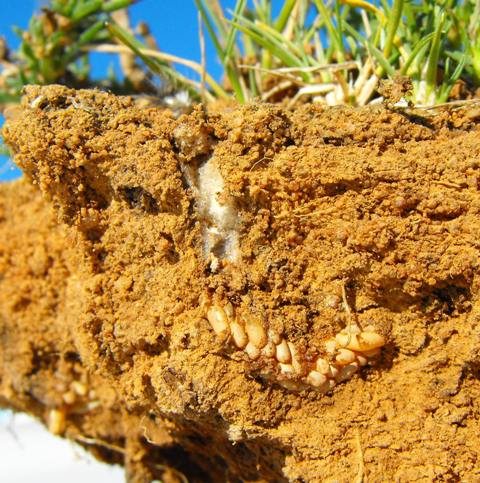Reproduction
The reproduction system of the suborder Caelifera, which the
Metaleptea brevicornis is a part of, contains gonads and
accessory glands. Males have testis where they hold spermatocytes as they mature and form packets of elongated
spermatozoa. These spermatozoa are gathered in the vesicula
seminalis, similar in function to a vas deferens in humans. Females have
oviducts that carry a ripe egg. During reproduction, males
insert sperm into the vagina through its reproductive organ, aedeagus. The spermatophore, a package containing the sperm,
goes into the females ovipositor. The sperm enter into the egg
through very tiny canals called micropyles. The eggs become
fertilized and the female lays an egg pod using her ovipositor
and abdomen (New World Encyclopedia
2008).
 An
egg pod has several dozens of tightly-packed eggs that resemble
rice grains. The eggs are positioned about one to two inches
underground and can also be laid in plant roots, manure or
underwater. The picture to the left shows the eggs underground
and a seal called a froth which protects the eggs from
desiccation, diseases, and predation(New
World Encyclopedia 2008).
An
egg pod has several dozens of tightly-packed eggs that resemble
rice grains. The eggs are positioned about one to two inches
underground and can also be laid in plant roots, manure or
underwater. The picture to the left shows the eggs underground
and a seal called a froth which protects the eggs from
desiccation, diseases, and predation(New
World Encyclopedia 2008).
The eggs remain there throughout
the winter and hatch when the weather is warmer. Grasshoppers
who live in the temperate zone spend nine months in the egg and
live three months as a young and adult grasshopper. These
grasshoppers develop by incomplete metamorphosis which means they
grow in stages while gradually getting bigger in body and wing
size(New World Encyclopedia 2008).